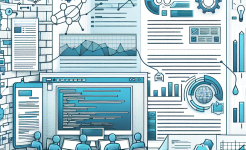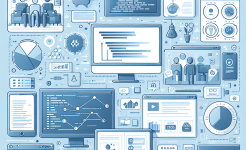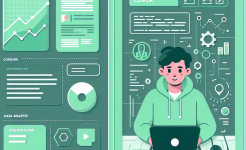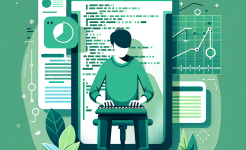Task Management Tools
Task management tools play a vital role in Agile stand-up meetings. They provide a centralized platform where team members can track their tasks, update progress, and assign responsibilities. One of the key advantages of using task management tools is that they offer real-time visibility into the project status. This means that everyone on the team can see what tasks are completed, which ones are in progress, and which are yet to be started. For example, tools like Jira and Trello allow users to create boards with columns representing different stages of a task, such as "To Do," "In Progress," and "Done." Team members can simply move cards representing tasks across these columns to indicate their status. This visual representation makes it easy for everyone to quickly grasp the project's progress at a glance during stand-up meetings.
Moreover, task management tools often come with features like task dependencies. This means that if one task is dependent on another, the tool can highlight this relationship. During stand-up meetings, when discussing tasks, team members can be aware of these dependencies and plan accordingly. If a task that another task depends on is delayed, the team can immediately address the issue and find solutions. Additionally, these tools can send notifications to team members when tasks are assigned to them or when there are changes related to their tasks. This ensures that everyone is kept informed and reduces the chances of tasks slipping through the cracks.
In addition to tracking individual tasks, task management tools can also provide insights into the overall project timeline. They can generate reports and dashboards that show the progress of the entire project, including milestones and deadlines. This information is invaluable during stand-up meetings as it helps the team to stay on track and make informed decisions. For instance, if the dashboard shows that a particular milestone is at risk of not being met, the team can discuss during the stand-up meeting what additional resources or actions are needed to ensure its timely completion.
Communication Platforms
Effective communication is the cornerstone of successful Agile stand-up meetings, and communication platforms are essential for facilitating this. These platforms enable seamless interaction among team members, regardless of their physical location. Video conferencing tools like Zoom and Microsoft Teams have become extremely popular in recent times, especially with the rise of remote work. They allow team members to see and hear each other clearly, creating a more engaging and collaborative environment. During stand-up meetings, video conferencing provides a sense of presence, making it feel like everyone is in the same room. This helps in building better relationships among team members and encourages more open communication.
Chat-based communication platforms such as Slack and Microsoft Teams also play a crucial role. They offer a quick and easy way for team members to share information, ask questions, and provide updates between stand-up meetings. For example, if a team member encounters an issue during the day, they can post it in the relevant channel on Slack. Other team members can then respond and offer suggestions or solutions. This continuous communication helps in keeping the project moving forward and ensures that problems are addressed promptly. During stand-up meetings, these chat platforms can be used to quickly reference any discussions or decisions that were made outside of the meeting.
Furthermore, communication platforms often come with features like file sharing and screen sharing. File sharing allows team members to share important documents, such as project specifications or design files, with the rest of the team. This ensures that everyone has access to the necessary information during stand-up meetings. Screen sharing, on the other hand, is useful when a team member wants to demonstrate something, like a new feature or a problem they are facing. They can share their screen with the rest of the team, making it easier for others to understand the situation and provide relevant feedback.

Visualization Tools
Visualization tools are a great asset for Agile stand-up meetings as they help in presenting complex information in a simple and understandable way. Whiteboard tools, both physical and digital, are widely used. Physical whiteboards in the meeting room allow team members to quickly jot down ideas, draw diagrams, and map out tasks. Digital whiteboard tools like Miro and Google Jamboard offer similar functionality but with the added advantage of being accessible remotely. During stand-up meetings, a digital whiteboard can be used to create a visual representation of the project roadmap, showing the different phases, tasks, and timelines. This visual aid helps team members to better understand the overall project structure and how their individual tasks fit into it.
Another type of visualization tool is the burn-down chart. Burn-down charts are used to track the progress of a project over time. They show the amount of work remaining in a project against the time available. In Agile stand-up meetings, burn-down charts can be used to quickly assess whether the project is on track. If the chart shows that the work is not being completed at the expected rate, the team can discuss during the meeting what factors are contributing to this and what corrective actions can be taken. These charts provide a clear and concise picture of the project's progress, enabling the team to make data-driven decisions.
Flowcharts and mind maps are also useful visualization tools. Flowcharts can be used to represent the workflow of a particular process within the project. For example, the process of how a feature request is approved, developed, and tested. During stand-up meetings, referring to a flowchart can help team members to understand the sequence of steps and ensure that everyone is following the same process. Mind maps, on the other hand, are great for brainstorming ideas and organizing thoughts. Team members can use mind maps to explore different aspects of a problem or a new feature during stand-up meetings, which can lead to more innovative solutions.
Feedback and Survey Tools
Feedback and survey tools are essential for improving the effectiveness of Agile stand-up meetings. These tools allow team members to provide anonymous feedback on various aspects of the meetings, such as the format, duration, and the quality of communication. Tools like Google Forms and SurveyMonkey can be used to create simple surveys that can be distributed to the team after each stand-up meeting. The feedback collected can then be analyzed to identify areas for improvement. For example, if multiple team members mention that the meetings are too long, the team can discuss during the next meeting how to streamline the agenda and reduce the duration.
Feedback tools can also be used to gather suggestions for improving the overall Agile process. Team members may have valuable insights based on their daily experiences working on the project. By providing a platform for them to share these ideas, the team can continuously refine and optimize their Agile practices. For instance, a team member might suggest a new way of tracking a particular type of task that could make the stand-up meetings more efficient. This feedback can be discussed and implemented if it is found to be beneficial.
In addition, feedback and survey tools can be used to measure team satisfaction. Understanding how team members feel about the stand-up meetings and the overall project environment is important for maintaining a motivated and productive team. If the survey results indicate that team members are not satisfied with a certain aspect, the team can take steps to address the issue. This could involve changing the meeting time, improving the communication style, or providing more resources. By using feedback and survey tools, the team can ensure that their Agile stand-up meetings are constantly evolving and meeting the needs of all members.
In conclusion, the use of these four types of tools - task management tools, communication platforms, visualization tools, and feedback and survey tools - can significantly enhance the effectiveness of Agile stand-up meetings. Task management tools provide clarity on task progress and dependencies, communication platforms enable seamless interaction among team members, visualization tools help in presenting information in an understandable way, and feedback and survey tools allow for continuous improvement. By incorporating these tools into their Agile practices, teams can ensure that their stand-up meetings are productive, collaborative, and contribute to the overall success of the project. These tools not only streamline the daily communication and coordination within the team but also foster a culture of transparency, innovation, and continuous learning. As Agile methodologies continue to evolve and adapt to the changing business landscape, the proper use of these tools will be even more crucial in enabling teams to deliver high-quality products and services in a timely manner.
ARTICLE TITLE :4 essential tools recommended for Agile stand-up meetings ,AUTHOR :ITpmlib

















